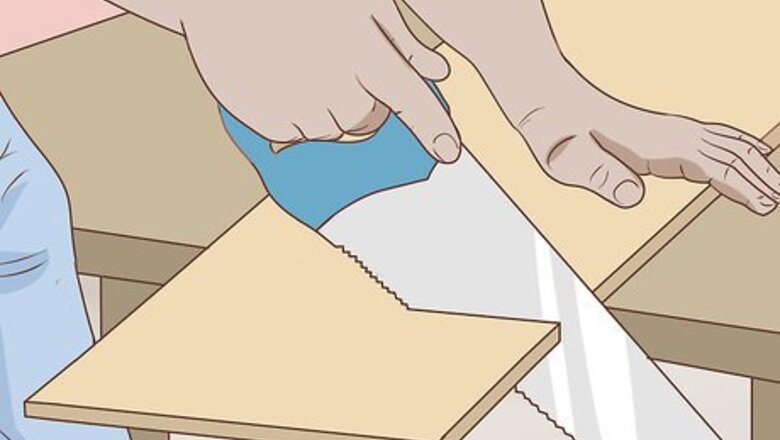
views
Building a Wooden Box Trap

Cut plywood to the dimensions of your box. Look for ⁄2 in (1.3 cm) plywood treated for outdoor use so it doesn’t develop mold or rot. Use a handsaw or circular saw to cut plywood to size for your box. Cut 1 piece that’s 12 in × 22 in (30 cm × 56 cm), 1 piece that’s 12 in × 12 in (30 cm × 30 cm), and 3 pieces that are 12 in × 24 in (30 cm × 61 cm). The 3 pieces that are 12 in × 24 in (30 cm × 61 cm) will be the bottom and the walls of your trap. The 12 in × 22 in (30 cm × 56 cm) piece will be the top of your trap with room so the trap door. The 12 in × 12 in (30 cm × 30 cm) will be the back piece.
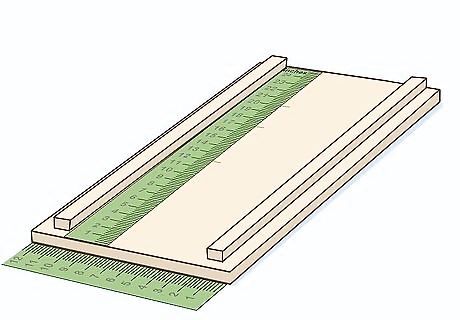
Secure 2 pieces of wood to the bottom piece of the box to brace it. Lay one of your 12 in × 24 in (30 cm × 61 cm) boards on a flat surface and measure in ⁄2 in (1.3 cm) from the long sides. Mark the distance with a pencil and lay 2 wood pieces that are ⁄4 × ⁄4 × 22 in (1.9 × 1.9 × 55.9 cm) on the insides of your lines. Use 3 screws in each wood piece and an electric screwdriver to attach them to the bottom. The wooden pieces will act as braces to make your box trap stronger. Make sure that one end of your wooden braces is flush with one of the short sides of the bottom. This way, your trap door will have room shut.

Cut metal panels to size with an angle grinder. Use a metal-cutting blade on your angle grinder to easily cut through the metal panel. Cut 1 panel that’s 10 in × 11 in (25 cm × 28 cm) to use for your trap door and another panel that’s 9 in × 3 in (22.9 cm × 7.6 cm) for a trigger that will spring the trap. Always wear safety glasses when cutting through metal so you don’t get any shavings in your eyes. If the metal has sharp edges, use a grinding bit on your angle grinder to smooth it out so you don’t hurt the raccoon while it’s in the trap.
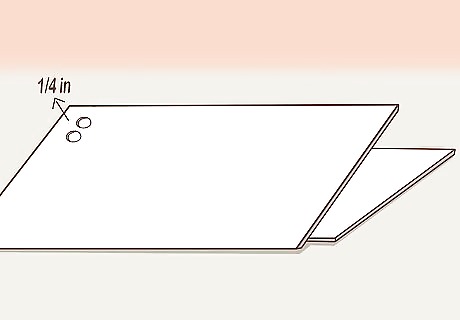
Drill holes ⁄4 inch (0.64 cm) from a corner through each metal plate. Use a ⁄8–⁄4 in (0.32–0.64 cm) drill bit meant for going through metal. Use a slow speed with firm pressure as you push the drill through your steel. Make a hole in one of the corners on each both of your metal plates so you can feed a wire through them to make a trigger for your trap.

Attach the 9 in × 3 in (22.9 cm × 7.6 cm) metal plate to the bottom with hinges. Screw 1-2 sets of hinges onto the bottom of the smaller metal panel. Make sure the hole you drilled is on the upper left or right corner of the panel. Attach the hinges to the bottom of your box trap so it’s about 5 in (13 cm) from the back wall. The metal panel acts as a trigger to set and activate the trap once a raccoon steps on it.

Screw the side and top pieces onto your box trap. Use the bottom braces as anchor points for your screws. Put in 3-4 screws per side with an electric screwdriver to attach the walls for your box trap. Once the walls are secure, put the top panel of wood on your box trap so it’s flush with the back wall.Tip: If you want to see into your trap to check if you caught a raccoon, cut out a 4 in × 6 in (10 cm × 15 cm) window in one of the wall pieces and cover it with chicken wire. Secure the chicken wire in place with staples every 1 in (2.5 cm).

Cut a 20 in (51 cm) PVC pipe in half along its length. Use an angle grinder or a circular saw to make your cuts. Clamp the pipe so it doesn’t move around as you saw it. Start at one end of the pipe and cut it in half. When you’re finished, you should have two 20 in (51 cm) long halves. The PVC pipe makes it easier for the door to drop without getting stuck.

Screw the pipe halves to the walls and put the metal door between them. Place the pipe halves against at the front of your trap so the rounded edges touch the walls. Use 2-3 screws per pipe to attach it to the wall pieces. Slide the 10 in × 11 in (25 cm × 28 cm) metal panel between the PVC pipes to make a door. Make sure the corner where you drilled the hole is on the bottom of the door. Test dropping your door down into the pipes to see if it catches on any of the screws. If it does, try to make them tighter and more flush with the inside of the pipe.
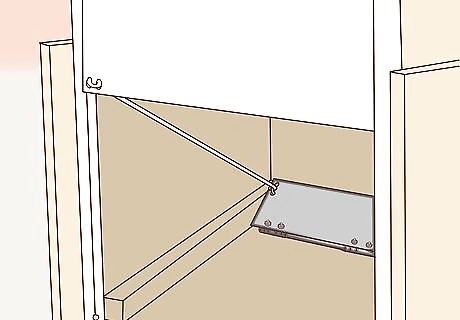
Connect an 8- to 10-gauge wire between the 2 metal plates. Loop the wire through the hole in the 9 in × 3 in (22.9 cm × 7.6 cm) panel, and wrap it around itself so it holds firmly. Run the wire through the hole in the bottom of the door so it extends out by ⁄2 in (1.3 cm). Wire can be purchased from any hardware store.
Making a Garbage Can Trap
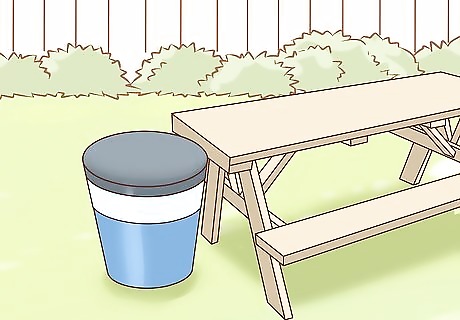
Set a garbage can next to a picnic table. You can use either a metal or plastic garbage can as long as it’s smooth on the inside. Place the garbage right next to a picnic table of a similar height. Make sure the edge of your garbage can touches the edge of your table. If you don’t have a picnic table you can use, then use another sturdy structure that’s the same height as your garbage and that raccoons can easily climb onto.

Fill the garbage can with 6 in (15 cm) of water. Use your hose to put water into your garbage can. Keep it filled 6 in (15 cm) to keep the garbage can from falling over and so the raccoon can’t jump out once you’ve captured it. This amount of water is enough to keep the garbage can from tipping over, but isn't enough to hurt or drown the raccoon. The water will weight down the raccoon’s fur, making it difficult for them to jump out or knock the can over.

Lay a board so it extends halfway over the garbage can. Set a 2 in × 4 in (5.1 cm × 10.2 cm) board that’s 18 in (46 cm) long on your picnic table. Slide the board out so it extends halfway across the opening of the garbage can. When the raccoon steps on the board over the garbage can, the weight will shift and cause the raccoon to fall in.
Baiting and Catching Raccoons
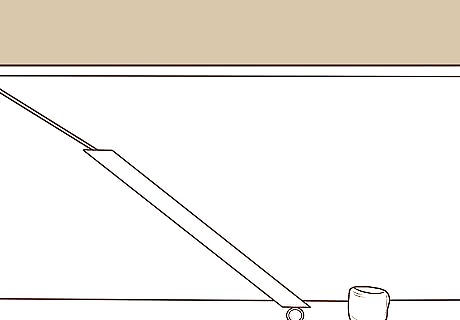
Bait your trap. Choose white food like marshmallows or eggs since they’re easier for nocturnal animals to see. Other baits that may work to catch raccoons include apples, fish, and dry fish cat food. If you’re using a box trap, place your bait inside against the back wall so the raccoon needs to walk completely inside. If you’re using a garbage can trap, place your bait on the end of the board over the garbage can. You may also buy commercial raccoon bait from outdoor care stores or online. Place your bait right before it gets dark so birds don’t eat it first.

Check your traps twice every day. Look for raccoons in your trap in the morning and in the early evening. Since raccoons are nocturnal, most times they’ll enter your trap in the middle the night. When you see that the trap is set, take it out of your yard so you can release the raccoon somewhere else. Change your bait every 2 days if it’s uneaten. If you accidentally catch an animal besides a raccoon, you can choose to release it back in your yard or transport it somewhere else.

Release the raccoon in an area 3 mi (4.8 km) away. Once you capture a raccoon, transport the animal to an unpopulated area at least 3 mi (4.8 km) away from where you captured it. When you let the raccoon go, point the trap away from you and lift the door so it can run out without coming near you. If you use a garbage can trap, put a lid on the garbage can first before transporting it. Wear gloves if you’re worried about getting bitten.Warning: Raccoons can carry diseases, such as rabies, salmonella, and E. Coli. Be careful while transporting or handling a raccoon that’s been trapped.














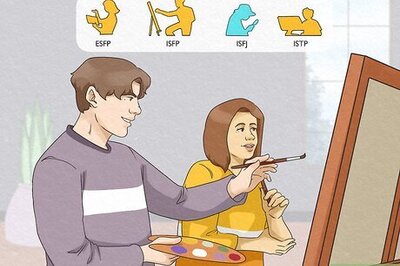




Comments
0 comment